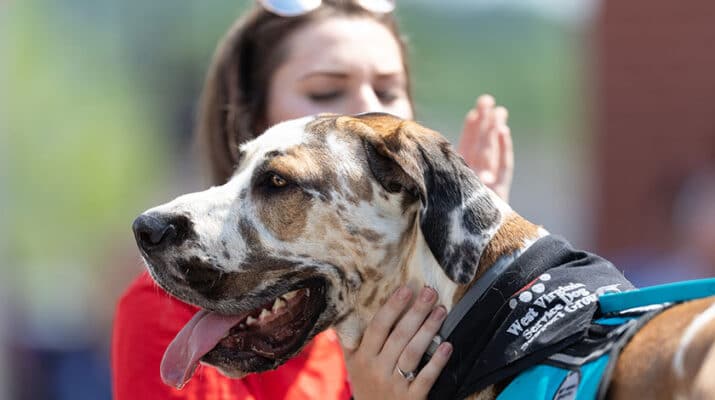‘Man’s best friend is much more than just a family pet
By Deborah Jeanne Sergeant
Assistance dogs can perform more tasks than guiding. Their role has expanded considerably to provide help for a variety of needs, including helping people with autism.
The terms “service” and “support” may seem interchangeable when referring to dogs that help people. However, what they can do as well as where they can go differs widely.
“Support animals can be very helpful to individuals with developmental disabilities including autism,” said Andy Lopez-Williams, founder and clinical director at ADHD and Autism Psychological Services and Advocacy in Syracuse and Utica. “However, under the Americans with Disabilities Act, support animals are not covered and, therefore, do not have the same level of access as service animals.”
“A primary difference between a service animal and support animal is the level of training and function that the animal provides. Service animals are trained to perform a specific function whereas support animals are not.”
That is why support animals are not permitted ubiquitously like service animals, which perform specific, trained tasks to support the needs of a person with disabilities.
Karen Shirk, CEO and founder of 4 Paws for Ability in Xenia, Ohio, has bred and trained dogs for service for 20 years, including for people with autism. She places 120 trained dogs annually. As the mother of a child with autism, she understands what families with an autistic child experience. She is also a person who relies upon a service dog for her own disability.
“They have a lot of issues with behavior,” Shirk said of children with autism. “A lot of times the children have meltdowns and if they’re nonverbal, there’s no way to know why they’re in such a state. They usually have certain behaviors before they go into a meltdown and we use the dog before they get into that state. They can have the dog touch the child. That can disrupt or break the thought process with repetitive behaviors. The dog can also lie across part of the child’s body. It gives weighted, deep pressure that sensory seeking kids need.”
By minimizing the number and extent of meltdowns, families can feel freer to go places and spend time in public with their children. Along with reducing behavioral issues, service dogs can also wear a harness that can tether the child to prevent children from bolting from their parents.
“The family can walk and hold the leash of the dog and the child won’t get away,” Shirk said. “What we’ve seen in 20 years is that these children accept that boundary. We’ve had parents try it with themselves in place of the dog and the children retaliate and want the parents to let them go. They don’t like it.”
At times when the child cannot be tethered, such as at a playground, the service dog is trained to track the child in a search and research fashion.
Shirk recalled a dog she placed that tracked a child who disappeared at 10 p.m. Despite minus 10 degrees windchill, the child was unclothed – and in danger. Within minutes, the dog tracked the child to a neighbor’s heavily wooded lot.
“The family would likely not have found that child in time to save that child’s life,” Shirk said.
Since 60% of children with autism have other, unrelated neurological conditions, service dogs can be trained to assist with other tasks such as sensing seizures so the child can lie down in a safe place and minimize the risk of injury or altering diabetic emergencies.
“These dogs are service dogs under the Americans with Disabilities Act and are task trained to mitigate disability,” Shirk said. “The family can navigate the community with this dog and can go anywhere a guide dog can go.”
In addition, service dogs perform helpful tasks that are not trained, such as providing a social bridge for children who typically feel left out and stigmatized because of their differences.
Typical children spot the service dog and gravitate towards the child with autism. These interactions can help foster friendships – something that can challenge children with autism.
Shirk said that she provided a dog for a boy with autism who showed him a picture of his “home planet.”
“He said that everyone there accepts you as you are and doesn’t care you’re different,” Shirk said. “It struck me deep. Six to nine months after he got his dog, he said, ‘Karen, I’m not really from that planet.’ With the dog, people got to know him. Everyone in his town knew his name.”
Dogs also help children with autism better understand emotional relationships and practice making connections by bonding to their dogs. Animals are always happy and interact in a simpler way than people.
Shirk said that dogs aren’t right for every family; however, for some, they make a significant difference.

